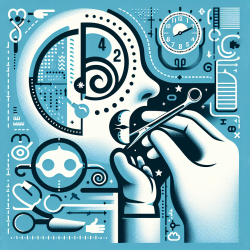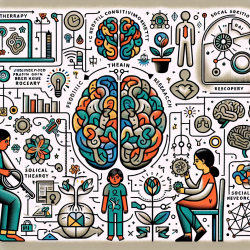Understanding the Cerebellum's Influence on Developmental Language Disorder
Recent research has unveiled surprising insights into the role of the cerebellum in developmental language disorder (DLD), a condition affecting approximately 7% of children. Traditionally, the focus has been on cortical and striatal systems, but new findings suggest that the cerebellum, particularly the inferior cerebellar peduncles (ICP), plays a crucial role in language acquisition and processing.
Key Findings from the Study
The study, "Microstructural Properties of the Cerebellar Peduncles in Children With Developmental Language Disorder," utilized diffusion-weighted imaging to compare the cerebellar white matter tracts of children with DLD to those of typically developing peers. The results revealed:
- Children with DLD exhibited lower fractional anisotropy (FA) in the ICP, indicating disrupted axonal organization.
- This disruption was characterized by higher orientation dispersion, suggesting less coherent axonal pathways, rather than differences in myelination.
- No significant differences were found in the middle and superior cerebellar peduncles, emphasizing the unique role of the ICP in DLD.
These findings suggest that atypical olivocerebellar connections, rather than corticocerebellar pathways, are involved in DLD. This novel perspective shifts the focus from traditional cortical areas to the cerebellum's contribution to language development.
Implications for Practitioners
For speech-language pathologists and educators, these insights offer a new avenue for intervention. Understanding the cerebellum's role in language disorders can lead to more targeted therapies. Practitioners should consider:
- Incorporating motor skill development into language therapy, as the cerebellum is integral to sensorimotor learning.
- Utilizing techniques that enhance sensory input processing, potentially improving the cerebellum's predictive modeling capabilities.
- Encouraging further research into cerebellar involvement in language disorders to refine therapeutic approaches.
These strategies could lead to more effective interventions, ultimately improving language outcomes for children with DLD.
Encouraging Further Research
While this study provides valuable insights, it also highlights the need for continued research. Longitudinal studies could explore how cerebellar connectivity evolves with age and its impact on language development. Additionally, investigating the interaction between cerebellar and cortical systems could offer a comprehensive understanding of DLD's neurobiological underpinnings.
For practitioners interested in delving deeper into this research, the original study offers a detailed analysis of the cerebellum's microstructural properties and their implications for language disorders.
To read the original research paper, please follow this link: Microstructural Properties of the Cerebellar Peduncles in Children With Developmental Language Disorder.










